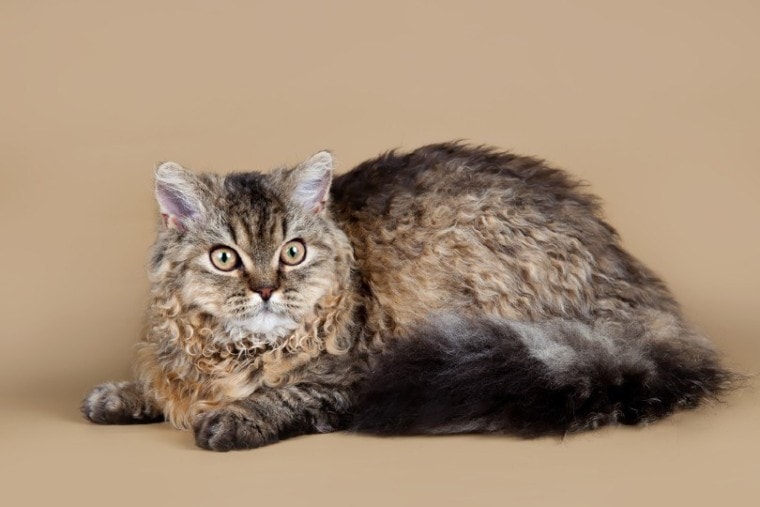
Cats come in all shapes, colors, and varieties. They also have diverse features including their coats, which can be short, long, in between, or even nonexistent. This wide range of characteristics is part of what makes cats so lovable. But each person has their preferences, and many people prefer the long-haired coats of particular breeds.
Certain breeds, Persians come to mind, are known for their luxurious, long-haired coats; it’s part of what makes them so popular and so pretty. Of course, Persians are far from the only long-haired felines worth taking a look at. If you’re a lover of cats with long coats, then the following 20 breeds are sure to tickle your fancy.
The 20 Cat Breeds With Long Coats
Many breeds of long-haired cats exist. Some breeds can produce long-haired cats but don’t always. This list is far from exhaustive, but these 20 breeds are some of the most well-known, popular pussies with long-haired coats. For these breeds, long hair is a defining feature, and it’s often one of the ways the breed is recognized.
1. Persian Cats

| Average Weight: | 7–12 pounds |
| Average Length: | 14–18 inches |
| Average Lifespan: | 10–15 years |
We’re starting with Persians as they’re essentially the iconic long-haired breed. Well-known for their long, beautiful coats, Persian cats have been around for a very long time. They originated in Mesopotamia—an area now called Iran but known as Persia for centuries.
In 1626, Persian cats were imported into Europe for the first time by a world-traveling nobleman by the name of Pietro Della Valle. Loved as much for their calm, pleasant temperament as their beautiful looks, Persian cats are highly popular, with similarly high price tags to match.
2. Japanese Bobtail Cat
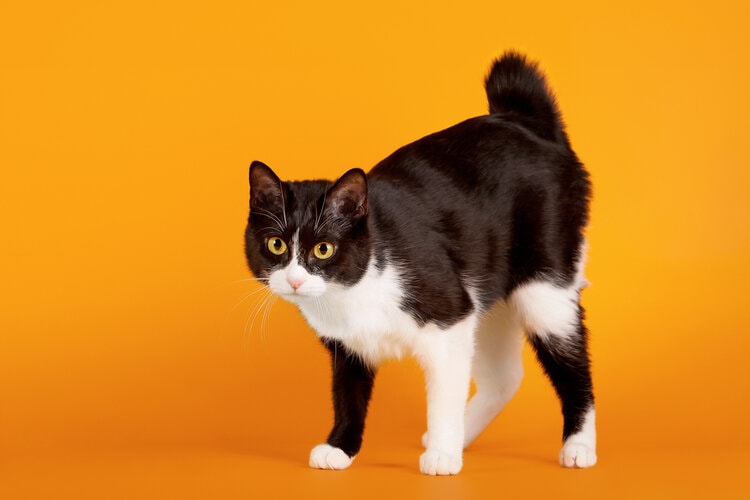
| Average Weight: | 6–12 pounds |
| Average Length: | 12–16 inches |
| Average Lifespan: | 9–13 years |
Japanese Bobtails aren’t always long-haired cats; they come in both long-haired and short-haired varieties. These cats are sleek, long, and highly athletic, with long muscles that allow them to leap to impressive heights.
This breed is known for having a highly social personality. They love to play with others and will bring their toy over to entice you into playing, which could last for a very long time. Once adored by Japan’s ruling class, the breed has never lost its royal demeanor, and they still believe that everything they see belongs to them.
3. American Bobtail Cats
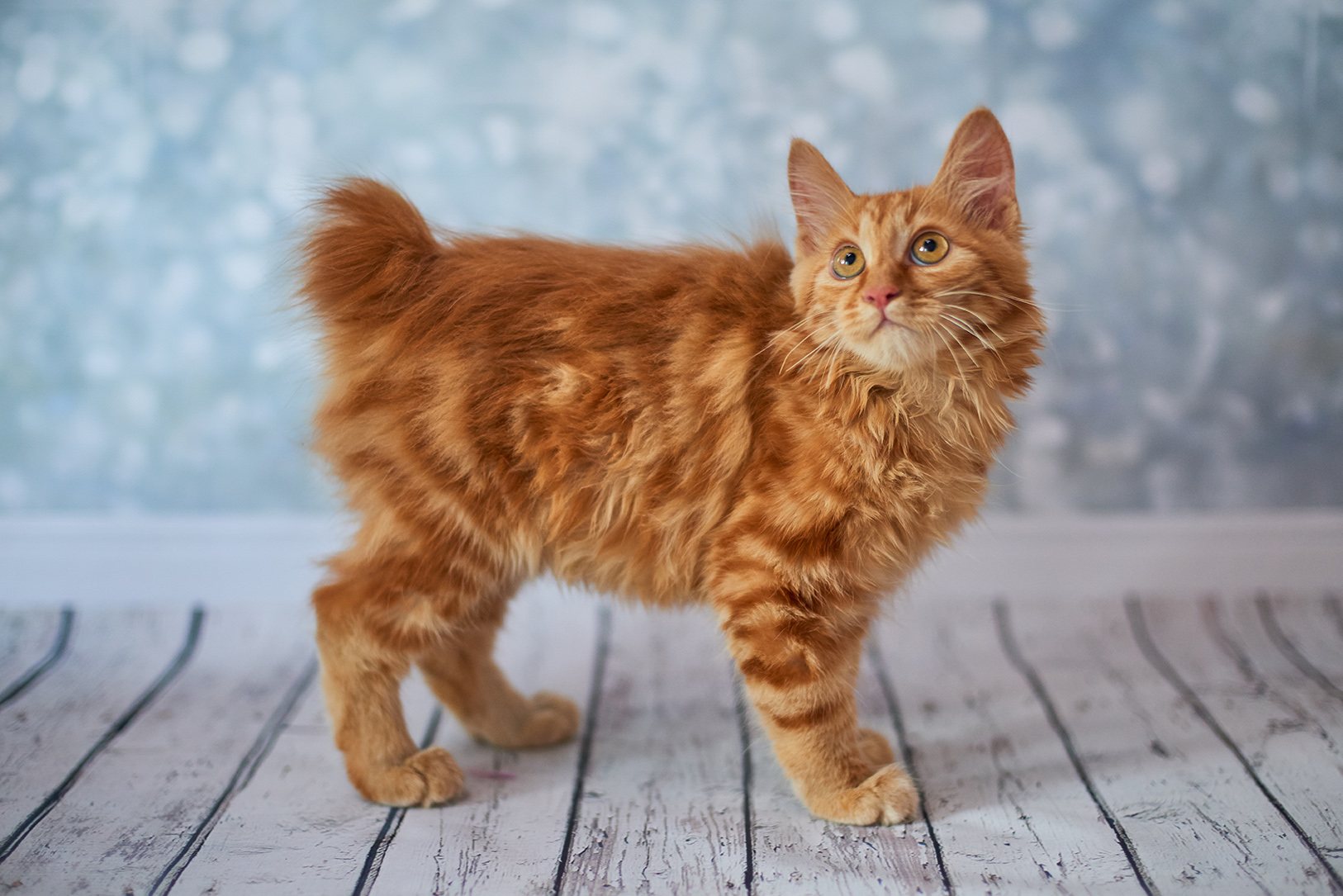
| Average Weight: | 8–16 pounds |
| Average Length: | 14–18 inches |
| Average Lifespan: | 13–15 years |
In dog breeds, if you see a cropped tail, it’s generally done by people. But in the American Bobtail cat, the bobbed tail is naturally occurring. Together with their striped coats, it helps to give the breed a distinctly wild appearance.
Even though they look wild, American Bobtails are docile cats that are known for being easy-going and loving with their family. You can even train these cats like dogs. Many of them will walk on a leash and actually get excited about it as an activity they truly enjoy.
4. American Curl Cat
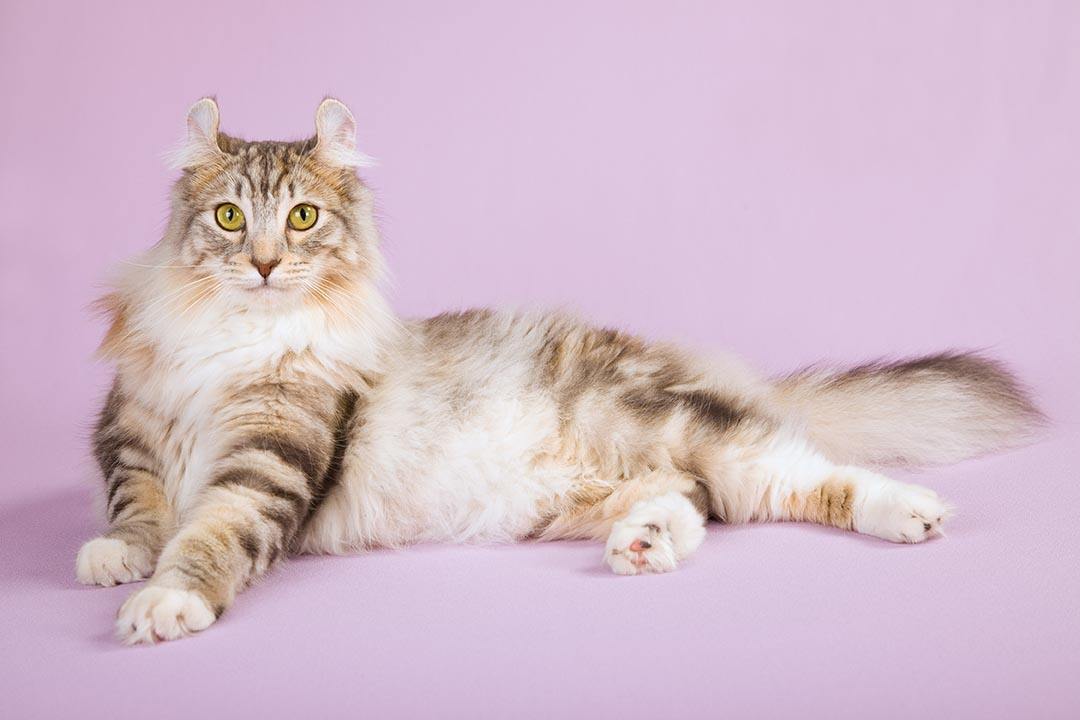
| Average Weight: | 5–10 pounds |
| Average Length: | 12–18 inches |
| Average Lifespan: | 9–13 years |
While American Curls do have long coats with a luxurious look, they’re not known for their hair. Instead, these cats are known for the trademark feature that became the namesake of the breed—their curled ears.
These instantly recognizable ears sparked as a random genetic mutation that occurred in a group of cats in 1981. It took just 5 years for the breed to be recognized by the largest feline registries in North America.
5. LaPerm

| Average Weight: | 5–10 pounds |
| Average Length: | 10–14 inches |
| Average Lifespan: | 10–15 years |
LaPerms have long coats that are unique in the cat world. However, it’s not the length of this breed’s coat that’s noteworthy. Rather, it’s the loose, bouncy curls that shape all of that long hair. Not just curly, the hair of LaPerm cats is silky soft and distinctly different from the curly coat of a Selkirk Rex or one of the few other curly-coated cat breeds.
This breed is known for more than just its curly coat. Its personality is also popular, often causing mischief. Many say that LaPerms has a sense of humor. They’re highly intelligent and often use their wits to get the attention of their owners.
6. Birman Cats
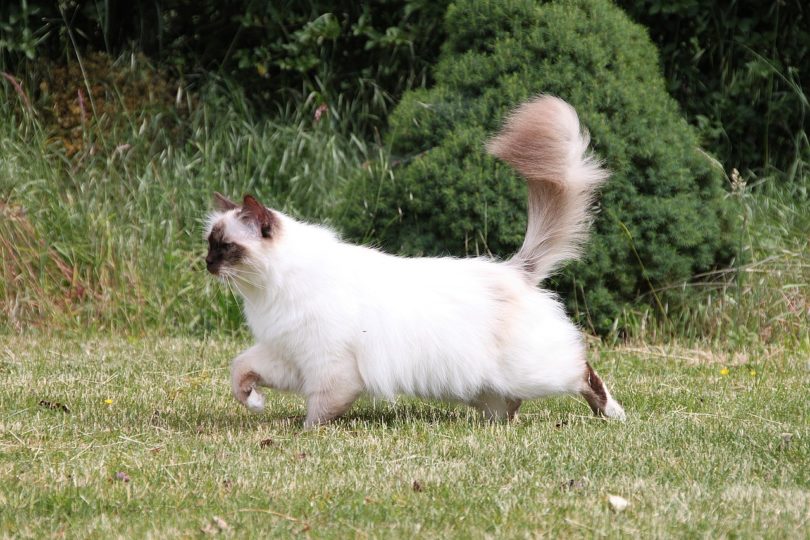
| Average Weight: | 6–13 pounds |
| Average Length: | 15–18 inches |
| Average Lifespan: | 12–16 years |
The Birman is the sacred cat of Burma, a country that today is known as Myanmar. According to legend, the incredible and eye-catching appearance of the breed, brilliant white coat with colored points and blue eyes, was the result of interference from a blue-eyed goddess rewarding a temple cat for its love and devotion to a particular priest.
Birmans are known for having similar personalities to the ever-popular Siamese cat, though without all of the yowling and howling that commonly accompanies the Siamese breed. Smart and exploratory, Birmans love to get into trouble; they’re the epitome of curiosity killing the cat, though they’re rather docile cats overall.
7. Ragamuffin Cat
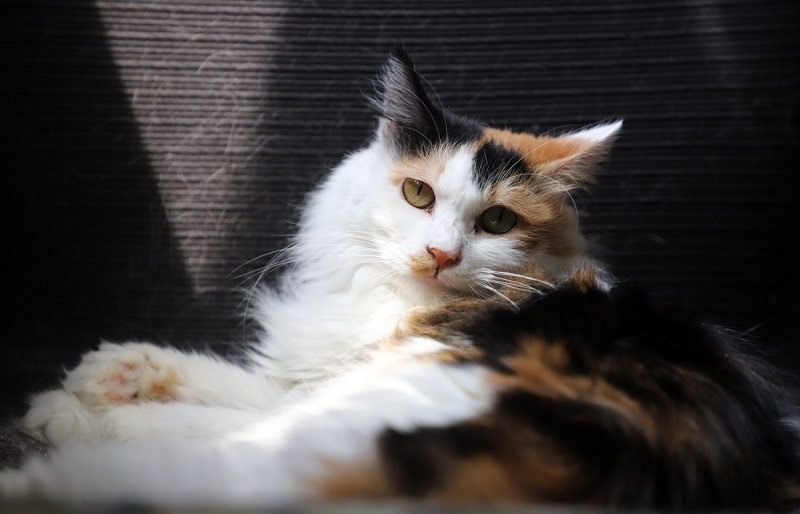
| Average Weight: | 10–20 pounds |
| Average Length: | 12–18 inches |
| Average Lifespan: | 12–16 years |
Ragamuffins are closely related to Ragdolls. Ragdolls were crossed with Persians and Himalayans to make them larger and provide some appearance alterations to the breed, though the Ragamuffin name is an homage to the breed’s origins.
These cats are lap cats through and through. They follow around their family and take every opportunity to jump into your lap and curl up for a nap. But they’re also big on playtime. Ragamuffins love to tear up toys and scratching posts, though they’re known to be discerning and avoid the furniture.
8. Ragdoll Cats
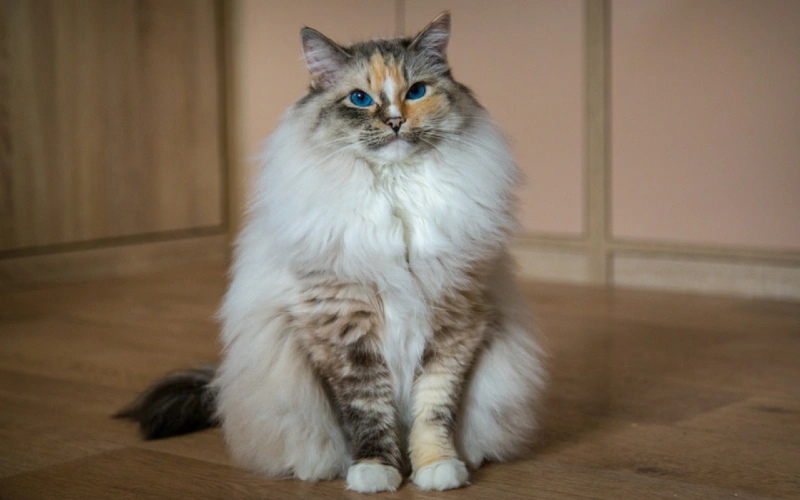
| Average Weight: | 10–20 pounds |
| Average Length: | 17–21 inches |
| Average Lifespan: | 12–17 years |
Ragdolls are a relatively new breed, first developed in the 1960s in California. Bred to have placid and low-key personalities, Ragdolls are named for their favorite thing to do—flop into your lap or arms and go limp like a little ragdoll.
Of course, Ragdolls are not little cats. Weighing up to 20 pounds, this is a rather large breed. Despite first being created in the 60s, the breed wasn’t officially recognized by the Cat Fanciers’ Association until 2000. Maybe this had something to do with the awfully strange claims the breed’s creator made about their origin, including stories involving CIA experiments, alien interference, and human gene infusions. Of course, none of these have any factual basis or proof, but they’re certainly interesting stories!
9. Siberian Cat
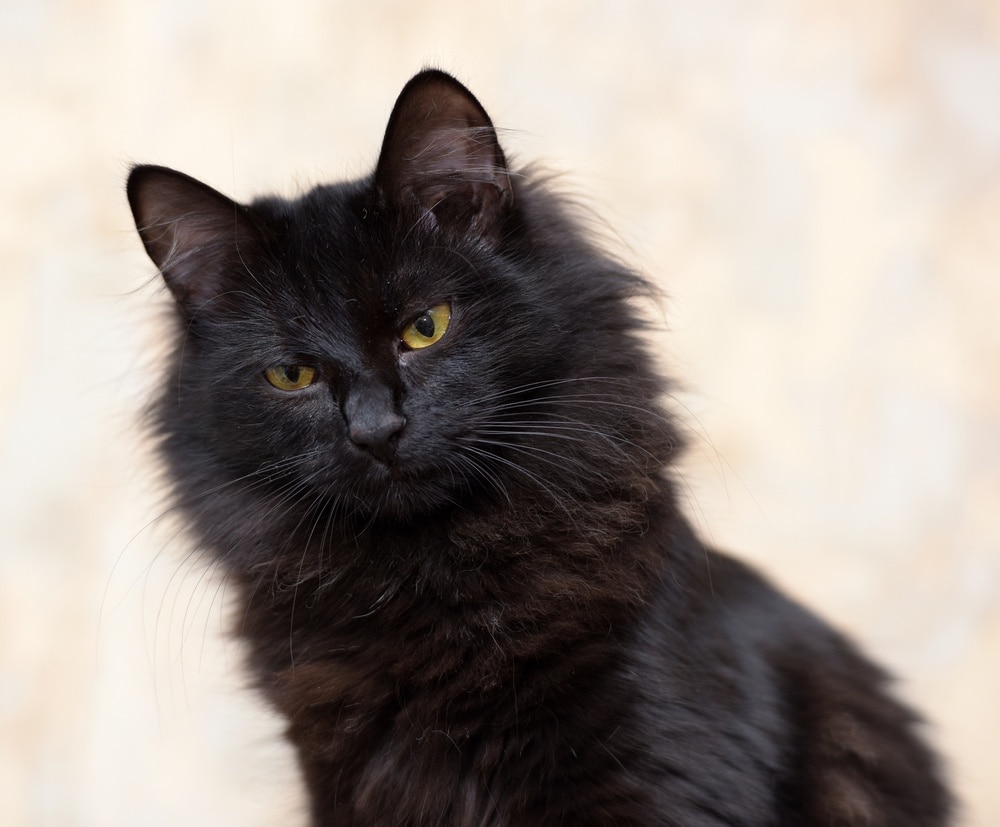
| Average Weight: | 8–17 pounds |
| Average Length: | 17–25 inches |
| Average Lifespan: | 11–18 years |
Siberia is a harsh, subarctic environment that’s difficult for any ill-equipped creature to survive in. That is why the Siberian cat breed has been bestowed with such a long, thick coat. It protected them for more than 1,000 years through cold, harsh winters.
The Siberian breed is ancient. However, they weren’t imported into the United States until very recently. Siberians first made it to the US in 1990. Shortly after, in 1996, the breed was recognized by the International Cat Association. It wasn’t until 2006, however, that they received official recognition as a breed from the Cat Fanciers’ Association.
10. Turkish Van Cats

| Average Weight: | 10–18 pounds |
| Average Length: | 14–17 inches |
| Average Lifespan: | 12–17 years |
While most cats are known for being quite water-averse, Turkish Vans are one of the few exception breeds. These cats are actually known as the swimming cats since they love to play in the water so much.
The Turkish Van originated in Turkey centuries ago. It’s a natural breed, so no people played a hand in the breed’s development. As legend tells, two members of the breed were on Noah’s Ark. They swam ashore and landed on Mount Ararat, which is not far from Lake Van, from which the breed takes its name.
11. Turkish Angora Cat
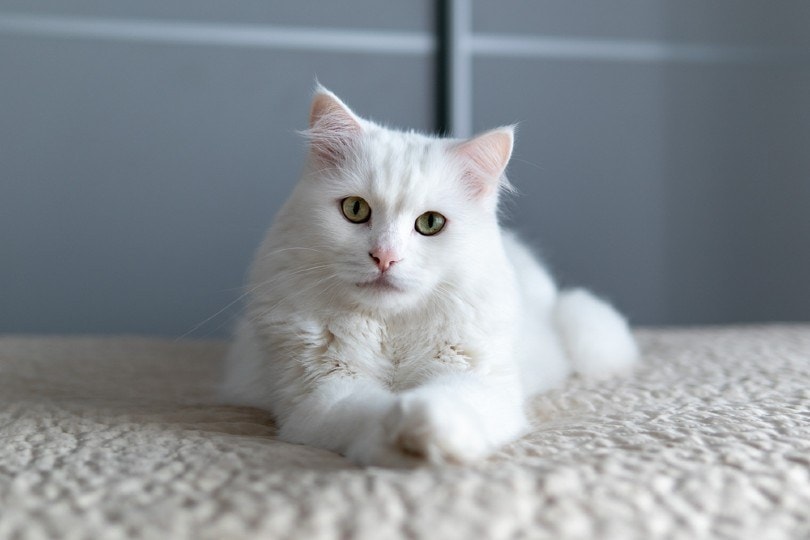
| Average Weight: | 5–9 pounds |
| Average Length: | 14–18 inches |
| Average Lifespan: | 12–18 years |
As you might guess from the name, the Turkish Angora is another breed that originates in Turkey. Many of these cats have been taken from Turkey over the centuries as souvenirs for either invaders or tourists. As the story goes, the breed was originally brought to the country by Vikings more than a millennium back.
Not long ago, things looked bleak for the Turkish Angora. The breed had nearly gone extinct. Luckily, a breeding program through the Ankara zoo managed to bring them back from the brink of extinction, and the first Turkish Angoras came to the US in 1954. Though they’re recognized by most North American feline registries today, the breed wasn’t first recognized by the Cat Fanciers’ Association until 1972, when they only accepted white Angoras. Colored Angoras weren’t accepted until 1978.
12. Manx
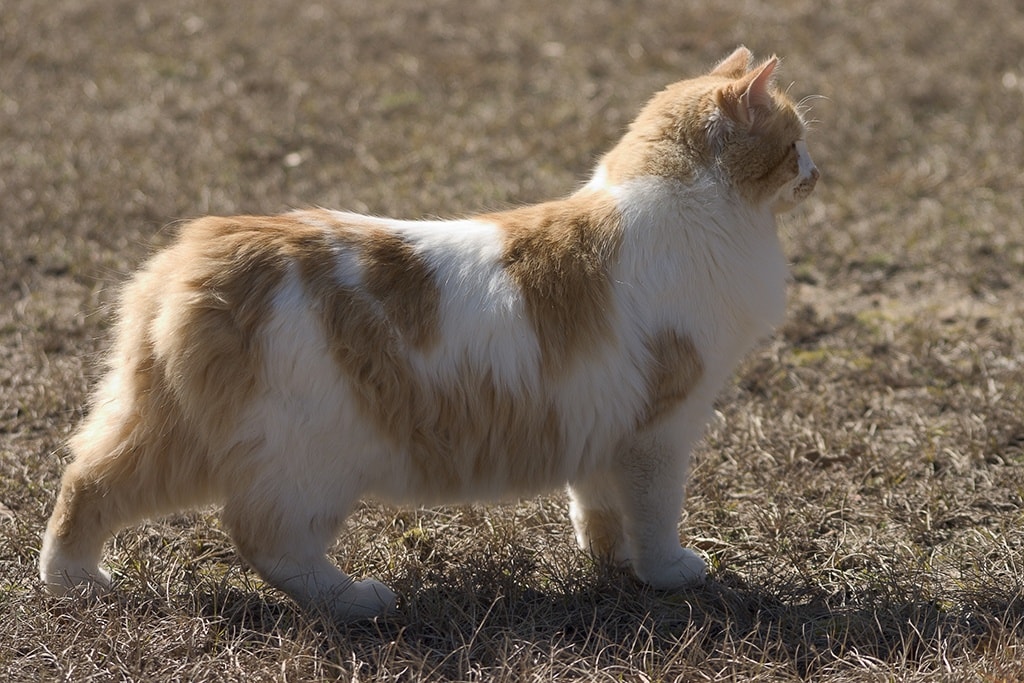
| Average Weight: | 8–12 pounds |
| Average Length: | 14–16 inches |
| Average Lifespan: | 8–14 years |
The Manx is an instantly recognizable breed thanks to its unique physical characteristics. Unlike most cats, Manx cats have no tail! Bred to be entirely tail-free, the Manx cat was created on the Isle of Man, which is an island located off the shore of Britain. Because of the island’s remoteness, a single tailless cat was able to become an entire breed.
On the Isle of Man, they were used for the important task of mousing or hunting down the rodents that destroyed homes and food supplies. Modern Manx cats are still adept hunters that act as watch cats, keeping an eye on anything even vaguely threatening that happens near your home.
13. Selkirk Rex
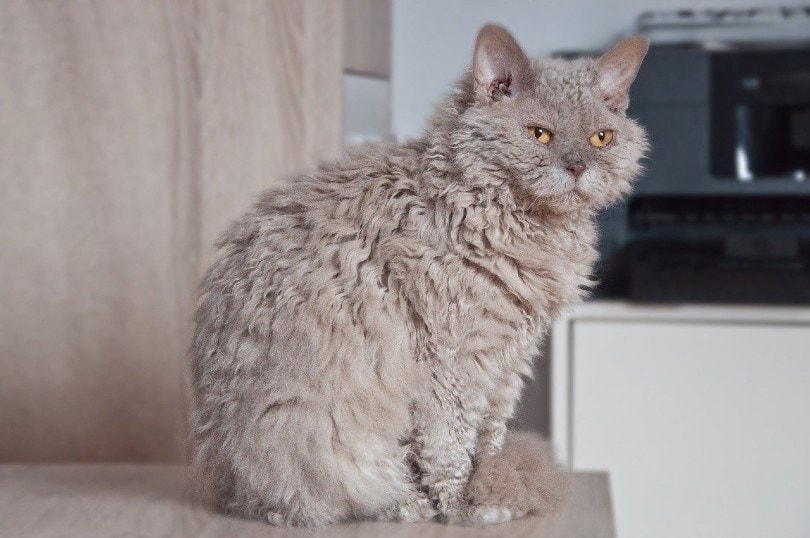
| Average Weight: | 10–15 pounds |
| Average Length: | 14–18 inches |
| Average Lifespan: | 10–15 years |
This breed has been called a cat in sheep’s clothing. If you see one in real life, you’ll know why instantly. They’re covered in long, wooly locks that resemble those of a sheep. Though related to Devon Rexes and Cornish Rexes, the curly coat of the Selkirk Rex looks quite different and is the result of a natural genetic mutation.
The Selkirk Rex breed got its start in a unique way when a litter of six kittens was found in an animal shelter in Montana in 1987. Most of these cats were normal, though a single female had a curly coat that was extremely unusual. This cat was brought to a local breeder of Persian cats who mated the curly-coated cat with a black Persian. Three of the offspring had curly coats as well, and the breed was off to a great start.
14. Pixie-bob

| Average Weight: | 8–25 pounds |
| Average Length: | 20–24 inches |
| Average Lifespan: | 13–15 years |
The origins of the Pixie-bob breed aren’t 100% known. However, it’s believed that the breed started when a bobcat mated with a barn cat, creating an unplanned litter of cats in 1985 that was half wildcat and half domestic. There’s no proof that the breed’s father was truly a bobcat, though this tale is well believed and accepted by many respected breeders and is even included in the breed’s name.
Though the breed first started in 1985, they haven’t yet received official recognition from the Cat Fanciers’ Association. Several other feline registries have recognized them, but not the big one. Still, they’re growing in popularity, thanks in part to their unique bobbed tail and wild appearance that make them part of a select group of domestic cats that look like they’re wild.
15. Scottish Fold Cats
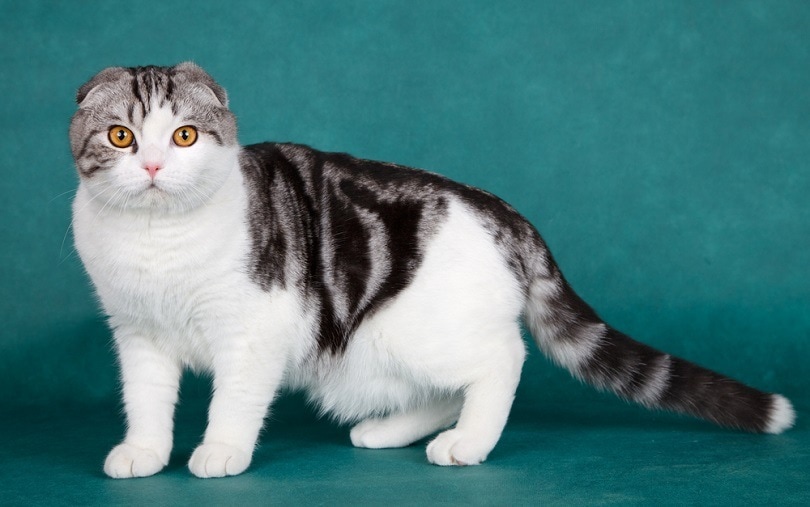
| Average Weight: | 6–13 pounds |
| Average Length: | 10–12 inches |
| Average Lifespan: | 11–14 years |
Scottish Folds are small cats, that like many breeds, are named for their unique physical characteristic. The Scottish Fold exhibits some interesting ears that are folded forward. Every member of the breed can trace its lineage back to a single female named Susie. Susie was born with a natural genetic mutation that caused her ears to curl down, and when the trait was picked up on by a local breeder named William Ross, the Scottish Fold breed got its start.
This breed first started in the early 1960s, and it took just a decade for them to make it into the US. While recognized by most major North American cat associations, Scottish Folds aren’t recognized in their homeland, due to fears that the folded ears could lead to health concerns including ear infections, deafness, and cartilage problems.
16. Maine Coon Cat
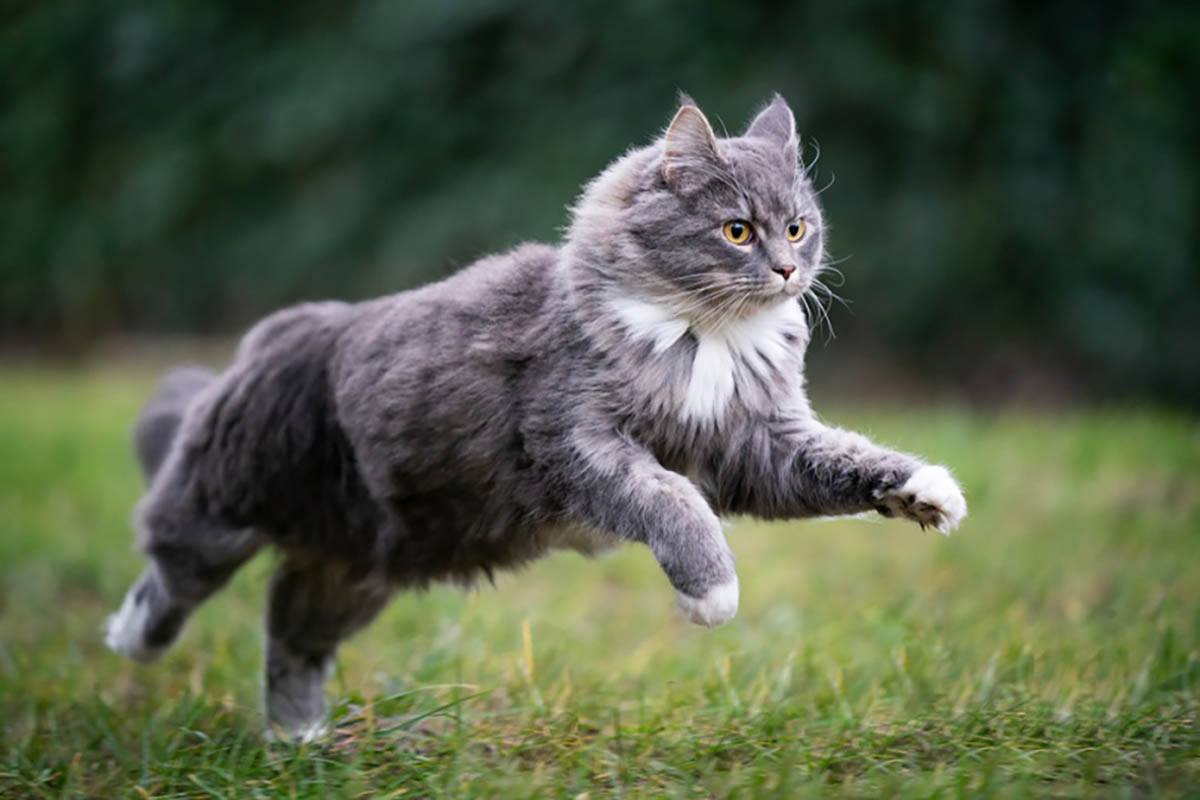
| Average Weight: | 9–35 pounds |
| Average Length: | 30–40 inches |
| Average Lifespan: | 9–15 years |
Maine Coons have a serious claim to fame—they’re the largest breed of domestic house cats. They can weigh upwards of 30 pounds, and the breed even holds the record for the longest cat in the world, which is just over 47 inches in length.
As the name suggests, the Maine Coon was first created in Maine. They were made as a versatile working breed, meant to kill mice on farms and ships as far back as the 1800s. Though first started in Maine, the breed is naturally occurring and we don’t know much about how they truly began. If legends are to be believed, then Vikings brought them to North America before Columbus ever sailed to the New World, though others believe that they’re descended from long-haired felines that Marie Antoinette sent to America, hoping to escape there herself.
17. Himalayan Cat
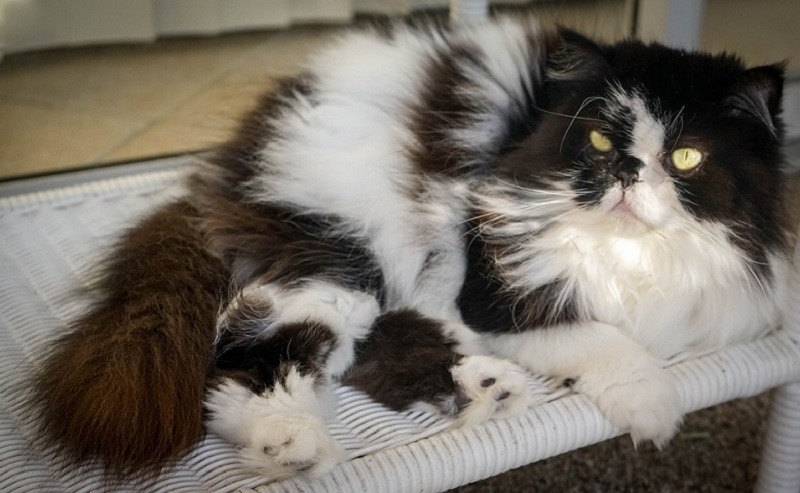
| Average Weight: | 7–12 pounds |
| Average Length: | 17–19 inches |
| Average Lifespan: | 9–15 years |
Himalayan cats act just like Persians, though they look just like Siamese. This makes sense since the parent breeds of these cats are the Persian and the Siamese. The idea was to make a cat with the docile and lovable temperament of the Persian, with the vivid blue eyes and color points of the Siamese.
The breeders achieved their goal, as the Himalayan looks strikingly similar to a Siamese. However, these cats have the sweet, calm, quiet personalities that Persians are known and loved for, making them a perfect mix of the two breeds.
18. Norwegian Forest Cat
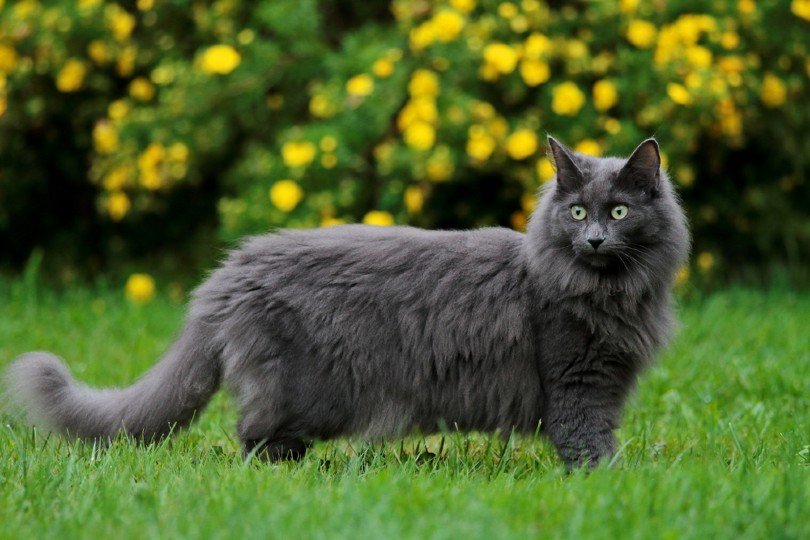
| Average Weight: | 13–22 pounds |
| Average Length: | 12–18 inches |
| Average Lifespan: | 12–16 years |
Norwegian Forest Cats have been living in their homeland of Norway for many centuries, possibly more than a millennium. According to myth, the breed is descended from the six giant cats that pulled Freya, the Norse goddess’s chariot. Truthfully, we don’t know how the breed got its start, but we know they’re an ancient breed.
Despite hundreds of years of survival, WWII nearly decimated this breed. Luckily, they were officially recognized by the Federation Internationale Feline in Europe in 1977. Just 2 years after, the US saw its first importation of two Norwegian Forest Cats, which led to an explosion in the breed’s popularity in North America shortly after.
19. Balinese Cat

| Average Weight: | 5–10 pounds |
| Average Length: | 13–18 inches |
| Average Lifespan: | 9–15 years |
The Balinese is a long-haired offshoot of the Siamese breed, named for the beautiful and graceful dancers on the island of Bali, off the coast of Indonesia. Aside from the difference in coat, these two breeds are essentially the same. Expect a Balinese to display the same general temperament as a Siamese.
These cats are full of energy with athletic physiques and highly intelligent minds that you must keep engaged. They love to play and will even play fetch like a dog. Similarly, many Balinese cats are trained to walk on a leash.
20. Somali Cats
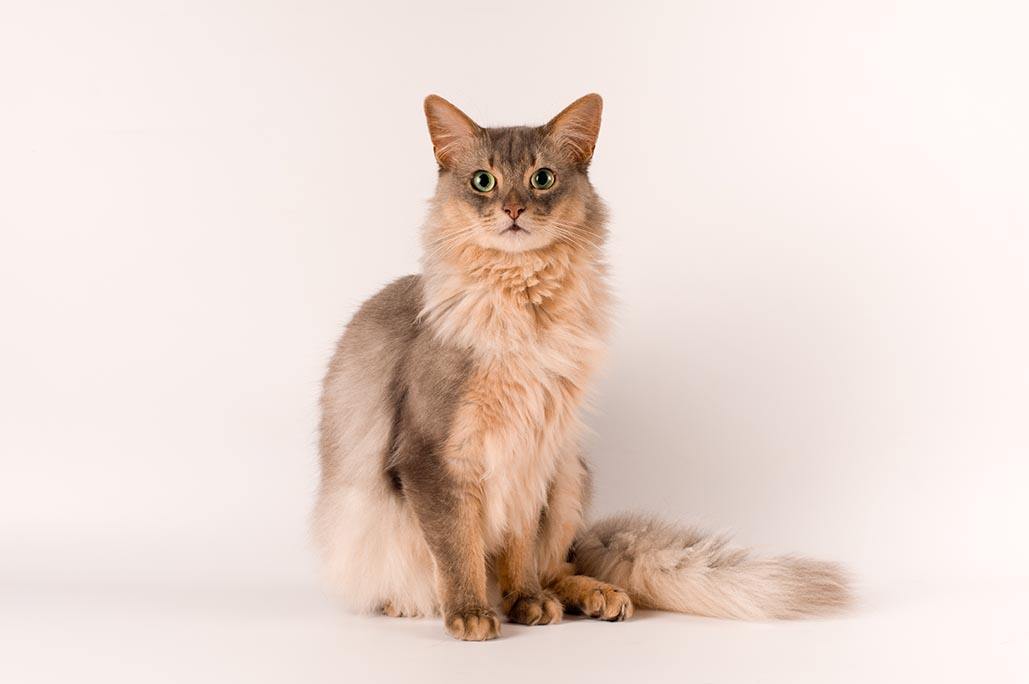
| Average Weight: | 6–10 pounds |
| Average Length: | 11–14 inches |
| Average Lifespan: | 11–16 years |
Somali cats are a long-haired version of the Abyssinian breed. Abyssinians have been popular since Victorian times when one early specimen was exhibited in the Crystal Palace Cat Show. This show took place in 1871, and the Abyssinian took third place.
Somalis are known for always trying to live their best life. They love to climb, jump, and play as hard as they can. Highly inquisitive, these cats are likely to use up all nine lives on the search for a bit of thrill. You’ll have to keep your wits about you with one of these furry felines underfoot!
- See Also: Oriental Longhair Cat
Final Thoughts
As cat lovers can attest, felines are as diverse as people. Each cat has its own specific appearance, demeanor, and nature. Every person has their preferences and choices that set them apart from others. Not everyone is a cat lover, and not all cat lovers prefer long coats. But if you’re one of the cat lovers who adores long luscious locks on a pretty kitty, then any of the cats on this list would be a good match for you. Of course, there are many other long-coated cats in the world, so if none of these feels like the right fit, keep exploring the many options, as the feline world is vast and diverse.
- Related article: Domestic Longhair Cat







